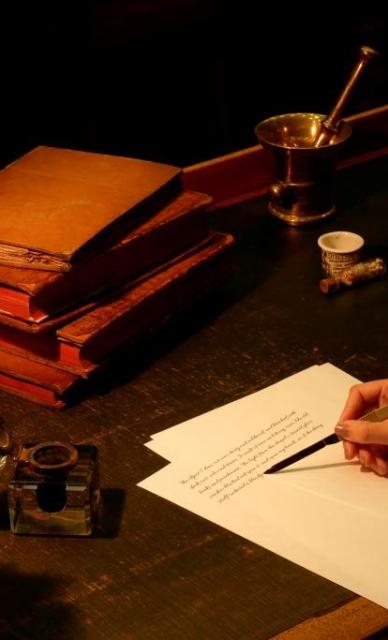Physicians' Gallery Newsletter
Updates on upcoming events, exhibitions and online stories
The physic garden from Leith Walk was moved to Inverleith Row, as the foundation of the Royal Botanic Garden Edinburgh. This process began in 1820, and would take three years. As before, the logistics of transferring the entire collection of plants, especially mature trees, to a new site seemed prohibitive.
Luckily, the new Curator of the Garden, William McNab (1780-1848), was not only an outstanding horticulturalist, but also a great inventor. He optimised a method for “exhuming” the trees and a “transplanting machine” which was drawn by 12 horses and was able to move huge trees safely. The scene is vividly described in the Planters’ Guide of 1828: “[S]o that the procession through the suburbs for many days, consisting of men, and horses, and waving boughs, presented a spectacle that was at once novel and imposing. The citizens of Edinburgh were surprised and delighted [...].”
One of the trees moved in that way in 1822 was a palm, Sabal Bermudana. It is now the oldest plant in the Royal Botanic Garden Edinburgh’s collection, and only one of two remaining plants that originally grew in the Botanic Garden’s previous location at Leith Walk.
Interestingly, it is not quite clear how the famous palm was originally acquired. There is now some evidence that it may have come from a German nursery. This seems fitting, given the many international networks established early on in the history of the physic gardens of Edinburgh, as well as the importance of Leith as a major trading port with Northern Europe and the Baltics during the 18th and 19th centuries.
The Botanic Garden's main site at Inverleith Row covers 70 acres. They are also responsible for three smaller botanic gardens, located at Benmore, Logan and Daywick. In total, these sites house over 270,000 individual plants.
The aims of the Botanic Gardens, as stated on their website, are:
◾ To conserve plant biodiversity in the face of global environmental change and mass extinction,
◾ To provide baseline taxonomic/botanical data as a foundation science,
◾ To understand the evolutionary processes that have given rise to the world's botanical diversity.

Deadly Nightshade (Atropa belladonna)

Physicians' Gallery Newsletter
Updates on upcoming events, exhibitions and online stories